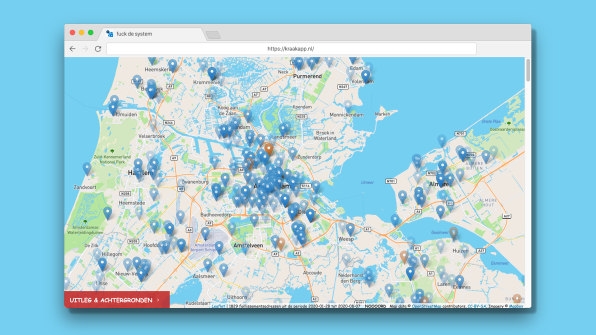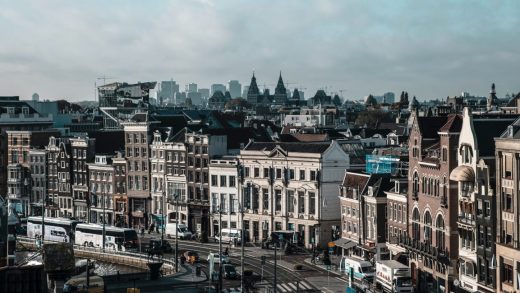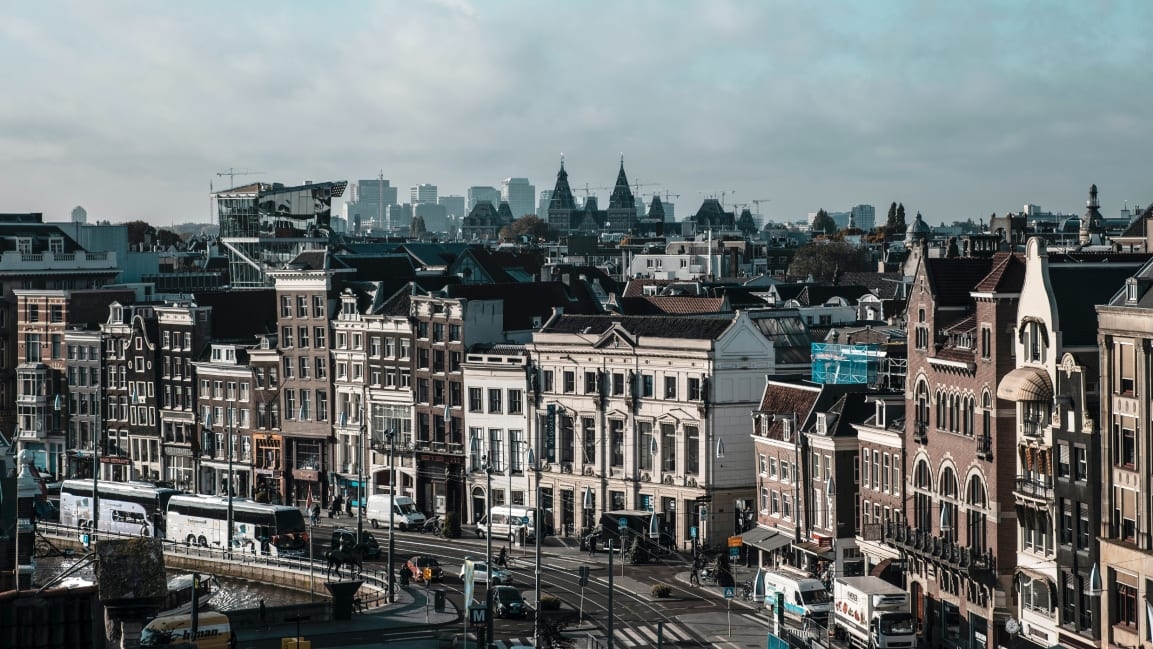Need a place to squat? This map plots out buildings that COVID-19 emptied out
The economic impacts of the coronavirus pandemic have been devastating for many businesses around the world. For squatters, it may create an unexpected opportunity.
As businesses go bankrupt and close up shop, they’re leaving behind a glut of empty commercial buildings and warehouses. This gave Amsterdam web developer and leftist Sjerp van Wouden an idea.
“I was just drinking with a friend, and I said what if I took all data of bankruptcies and cross-referenced that with Chamber of Commerce data. Would we get a map of all the squattable places?” van Wouden says. His friend was skeptical, but van Wouden decided to try anyway.

After spending a couple of hundred hours coding over the next three months, van Wouden released an online map of potentially empty buildings all across the Netherlands. Pins in the map show where properties are located, and shading indicates how long they’ve likely been empty.
Technically it’s a mashup of publicly accessible data, but van Wouden isn’t shy about its true intention, which he hopes will “demystify the finding of squats.” Visitors to the site will see its philosophy spelled out in their browser tab: “fuck de system.” Which is Dutch for exactly what you think.
Squatting has a long history in the Netherlands—in the early ’70s, there were an estimated 20,000 squatters in Amsterdam alone—but it was officially outlawed in 2010. Van Wouden says the movement has been dying out for decades. But with the current economic downturn, and rents rising across the Netherlands, van Wouden says more people may be interested in giving squatting a try.
“Chamber of Commerce data is the core part of researching squats,” van Wouden says. That’s because it shows how many businesses are located on each property, and how many have filed for bankruptcy. Locations with more bankruptcies may be better places to squat. But not many people know how to find this information. Even fewer really know what’s involved in squatting an empty building. Van Wouden says the longtime leftists and squatters in the city don’t exactly welcome newcomers with open arms. He recalls going to squat in a building and being met at the door with arrogance. “It was like, ‘who are you, mere mortal, coming before us?’” he says.
“As much as I love alternative culture and radical left politics, it can be a bit of a battleground,” van Wouden says. “This map is meant to make it really easy and accessible culturally to interested people to say, hey we could squat someplace instead of having to go to some dim-lit building where people are leather-clad and listening to punk music. Which is great, I love to do that myself, but it’s not the most inviting thing.”
The map is still a work in progress, and he’s already gotten some useful feedback from other developers on the map’s GitHub page. Future features will include details on property sizes and environmental regulations. Though the site’s only been up for a few days, he’s scheduled to lead a workshop on the project at the Amsterdam Anarchist Book Festival in November. Given similar data sources, the map may also be adapted to other countries.
But for all the effort he’s put into the map and the upgrades he plans to make, van Wouden won’t be using it for squatting. “That’s the weird part. I’m actually a homeowner,” he says. “I’ve got a mortgage.”
(29)



